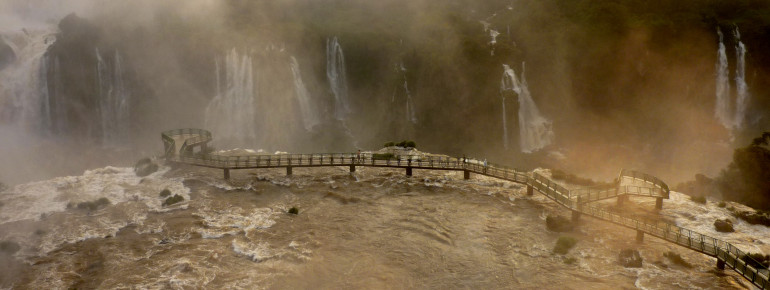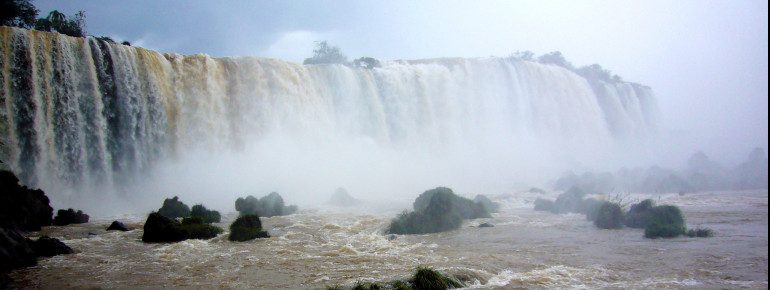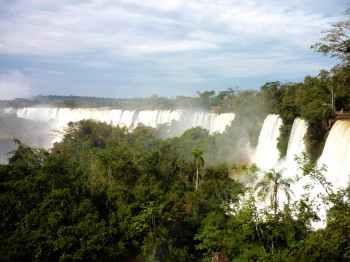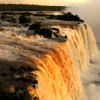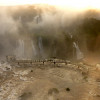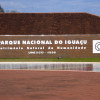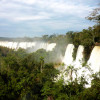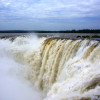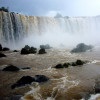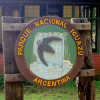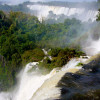Contents
Description
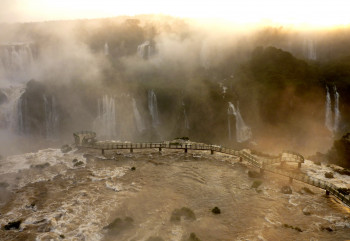
Natural spectacle in a class of its own
The largest waterfalls in the world are located in the Brazilian-Argentinian border region, between the Brazilian state of Paraná and the Argentinian province of Misiones. This also results in two correct spellings, Iguazú in Spanish and Iguaçu in Portuguese. The falls, also known as Cataratas do Iguaçu in Portuguese, impress with gigantic volumes of water that plunge up to 80 meters into the depths over a width of almost three kilometers. The absolute highlight of the 255 small and 20 large waterfalls is the so-called “Devil's Throat” - a 700-metre-long, U-shaped natural spectacle of thundering waterfalls. From the Argentinian side, a footbridge leads right up to the Garganta del Diablo - so close that you can get pretty wet here.
From the Brazilian side in particular, you have an incomparable view of the cascading masses of water, as the majority of the falls are on Argentinian territory. In Argentina, on the other hand, you practically walk over the waterfalls. It is definitely worth experiencing this natural spectacle from both sides.
Iguazú/ Iguaçu National Park
In both Brazil and Argentina, the waterfalls belong to the national parks of the same name, which were declared UNESCO World Heritage Sites in 1984 (Iguazú National Park in Argentina) and 1986 (Iguaçu National Park in Brazil). The rainforest area around the waterfalls is home to an incredible variety of species. Tropical plants, wild trees and rare animal species find ideal living conditions here.
So set off on a discovery tour through the fascinating world of the national park. If you are a good walker, you can explore the beauty of the rainforest and the waterfalls on various trails. The “Green Trail” runs relatively flat through the Brazilian rainforest and ends at the “Cataratas Train Station”. The “Upper Circuit” runs 650 meters along the waterfalls. The “Lower Circuit”, on the other hand, leads on footbridges almost 1.7 kilometers “into” the falls, i.e. to places where the water masses plunge down. A little refreshment is guaranteed here!
The “Rainforest Train”, an ecological slow train that departs right next to the visitor center, takes you comfortably to the viewing platforms of the national park.
Historical Information
The indigenous inhabitants of the region, the Guarani, have an ancient myth surrounding the creation of the waterfalls. The malevolent deity Mboi, according to tradition a giant snake, demanded a beautiful maiden as tribute from the people year after year. One day, the girl and her lover fled from their destiny and when Mboi noticed this, he was furious and carved a ravine into the riverbed where they were traveling. The story goes that the girl's soul has since been trapped in a rock at the foot of the “Devil's Gorge” and her boyfriend guards it in the form of a tree.
On the Argentinian side, Gregorio Lezama was the first owner of this extensive piece of land, although it was only later developed into a tourist reserve by Domingo Ayarragaray. The park was declared a national cultural asset in 1934 and finally recognized as a UNESCO World Heritage Site in 1984.
Interesting facts
- Iguazú Falls is the the best rated tourist attraction in Brazil.
- The day pass at Iguazú Falls is BRL117 making it one of the 3 cheapest tourist Attractions in Brazil.
How to get there
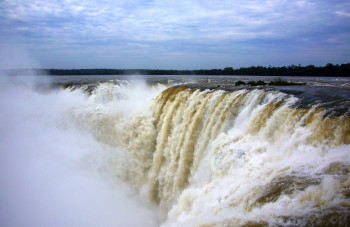
By public transport
The Iguazú Falls are easily accessible from both Argentina and Brazil. From Buenos Aires, for example, an intercity bus takes just under 20 hours to Puerto Iguazú for US$ 40. A similar journey is also possible from Porto Alegre, Curitiba or São Paulo. From the border towns of Puerto Iguazú or Foz do Iguaçu, you can easily reach the waterfalls by city bus.
The two cities can be reached more quickly by plane. You can find cheap flights to Iguazú with the airlines LAN Argentina or GOL, for example.


